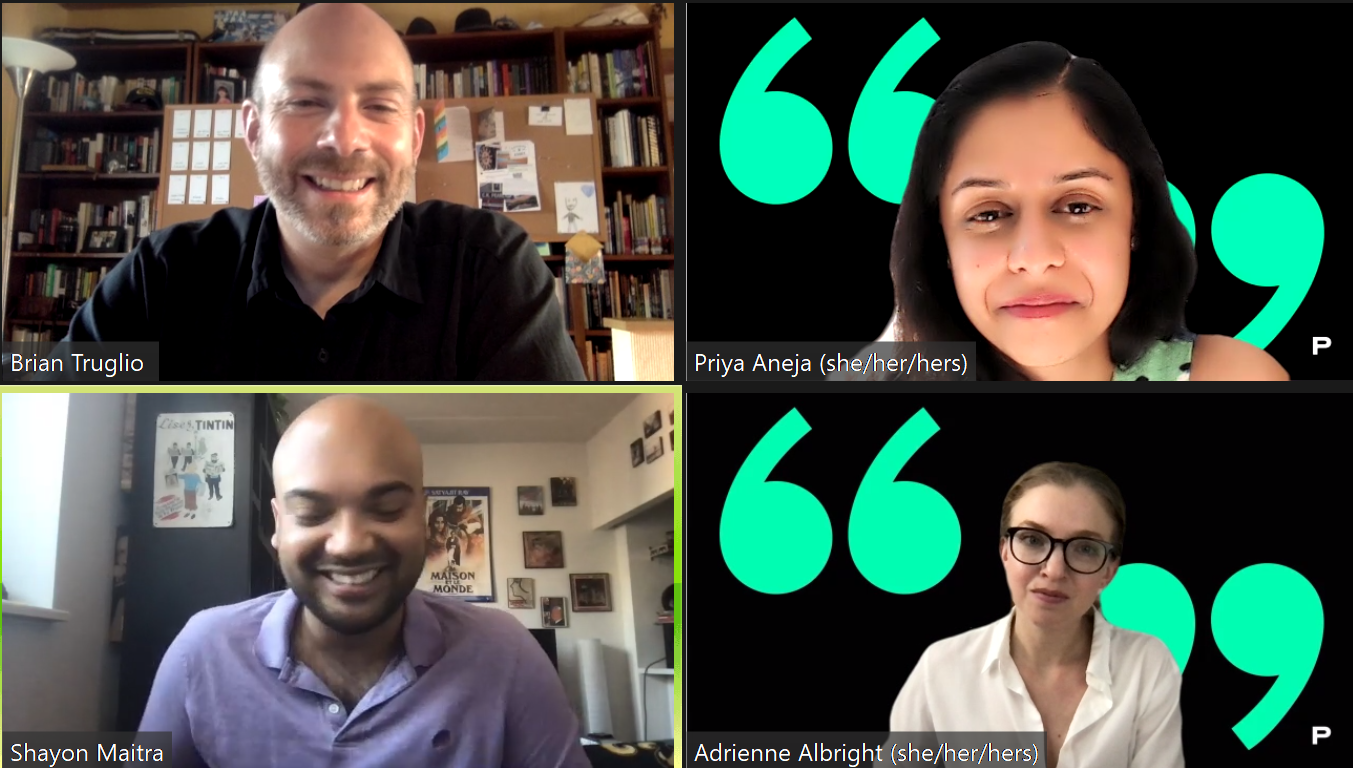BLOG
The Art of Strategic Storytelling: Behind the Scenes of Dr. Sanjay Gupta’s “Race for the Vaccine”
This compelling narrative offers lessons for businesses everywhere.
The biggest challenge for today’s businesses is to consistently produce personalized content at a large scale, deliver it at breakneck speed, and credibly have an impact on revenue. The businesses that are successful in this endeavor have invested in an innovative set of capabilities that make up an “Agile Content System”.
Imagine you had a front-row seat to the world’s foremost scientific teams as they worked to develop a life-saving vaccine. The filmmaking team behind CNN’s “Race for the Vaccine“ recently did just that, and Prophet’s healthcare team sat down with a few of them in conversation.
“To be a strategic storyteller, acknowledge that every interaction is an opportunity to build the relationships that could lead to the next great story.”
Produced by the Global Health Reporting Center and narrated by Dr. Sanjay Gupta, “Race for the Vaccine” tells the story of the Oxford University, the NIH, Pfizer, University of Queensland and China’s CDC teams that undertook the heroic task of developing a COVID-19 vaccine as the virus swept the globe. Co-Director Caleb Hallerman and Editors Brain Truglio and Shayon Maitra joined the healthcare consulting team to share their experience making the documentary and how their efforts were designed to build confidence in the scientific processes that underpinned the vaccine development.
Whether in journalism or business, well-crafted narratives can engage audiences in an authentic and persuasive way – what Prophet’s founder emeritus David Aaker likes to call “signature stories.” Here are our takeaways from the conversation – which provide lessons for anyone who tells stories in a business context.
Lessons from Filmmakers: How to Tell Stories in the Business World
1. Know Your Beat: The Power of Relationships
Relationships unlock access to great content. In the case of “Race for the Vaccine,” relationships allowed the documentary to tell a truly global story. Because of former projects and collaborations, Caleb and the Global Health Reporting Center were able to get access to research institutes including China CDC. As Caleb pointed out, “the most important relationships you have are the ones you have before the story breaks…to make those connections before you’re in the midst of a crisis.”
To be a strategic storyteller, acknowledge that every interaction is an opportunity to build the relationships that could lead to the next great story. In doing so, you’ll build credibility and trust not only through direct interactions but also by virtue of second-degree connections to other people, expertise and opportunities. Also, the broader that network is, the greater the opportunity to bring a diversity of perspective and experience to strategic recommendations and communications.
2. Find the Right Source: Characters Who Make the Story
People want to connect with other people. And to create a powerful story you need characters that keep audiences interested and invested in the story you’re telling. As Brian Truglio pointed out, “Character is really what drives the story…the most important thing is that you have interesting people who bring energy to the topic, and who can explain it. If you don’t have that…it’s not going to stick with people.” In “Race for the Vaccine,” this meant finding the scientists who could guide audiences on this complicated scientific journey such as Dr. Kizzmekia Corbett (NIH) and Dr. Keith Chappell (University of Queensland-Australia).
As business transformation leaders, it’s equally important to identify the central characters in any team you lead. What are individuals on your team passionate about? Where do their strengths lie? And where do the two come together to influence the business to adopt a strategic decision? Identifying what makes for a strong character at your organization can help rally it to change by clearly communicating its benefits to the market and modeling the behaviors that will lead to its success.
3. Go Beyond the Headline: Context Matters
It probably won’t come as a surprise that one of the challenges the filmmakers faced was capturing moments with the scientists in their labs. In early edits, one the biggest problems they identified was the lack of footage showing scientists in lab coats. It ran contrary to Brian and Shayon’s mantra for editing documentaries, “Show, don’t tell,” and required additional shoots and thoughtful editing to ensure that there was the right context to establish the credibility of these scientists. If the filmmakers had only had images of Dr. Corbett or Dr. Barney S. Graham at home, it may have limited viewers’ confidence in the safety and scientific rigor behind the vaccine research.
This experience highlights just how much context matters in strategic storytelling. In any business transformation, understanding the starting point – and how that starting point impacts any solution proposed to a business challenge – is critical to how a story is shaped to business leaders and executives. The synergy between story, strategy and action is the basis for credibility and trust, and the foundation for business success.

FINAL THOUGHTS
Telling the story of the development of the COVID-19 vaccine is (hopefully) a once-in-a-lifetime achievement for the filmmaking team behind “Race for the Vaccine,” but it doesn’t mean that the story is over. As governments continue the vaccine rollout, they are faced with overcoming the fear and biases that prevent people from getting vaccinated.
In this blog, David Aaker argues that storytelling, with the right frame of reference, is one of the best ways to connect emotionally, attract attention, distract from counterarguing and ultimately change the hearts and minds of those who may be vaccine-hesitant or resistant. Whether you’re a documentary filmmaker, a consultant or just a friend and neighbor, the stories we tell have the power to shape the world around us.
Thank you again to Caleb, Brian, and Shayon for speaking to our team. You can learn more about the Global Health Reporting Center’s mission to create in-depth health journalism here.
If you’re interested in working with Prophet’s healthcare growth strategists – or are interested to learn more about opportunities to engage our network of industry experts – reach out today.

